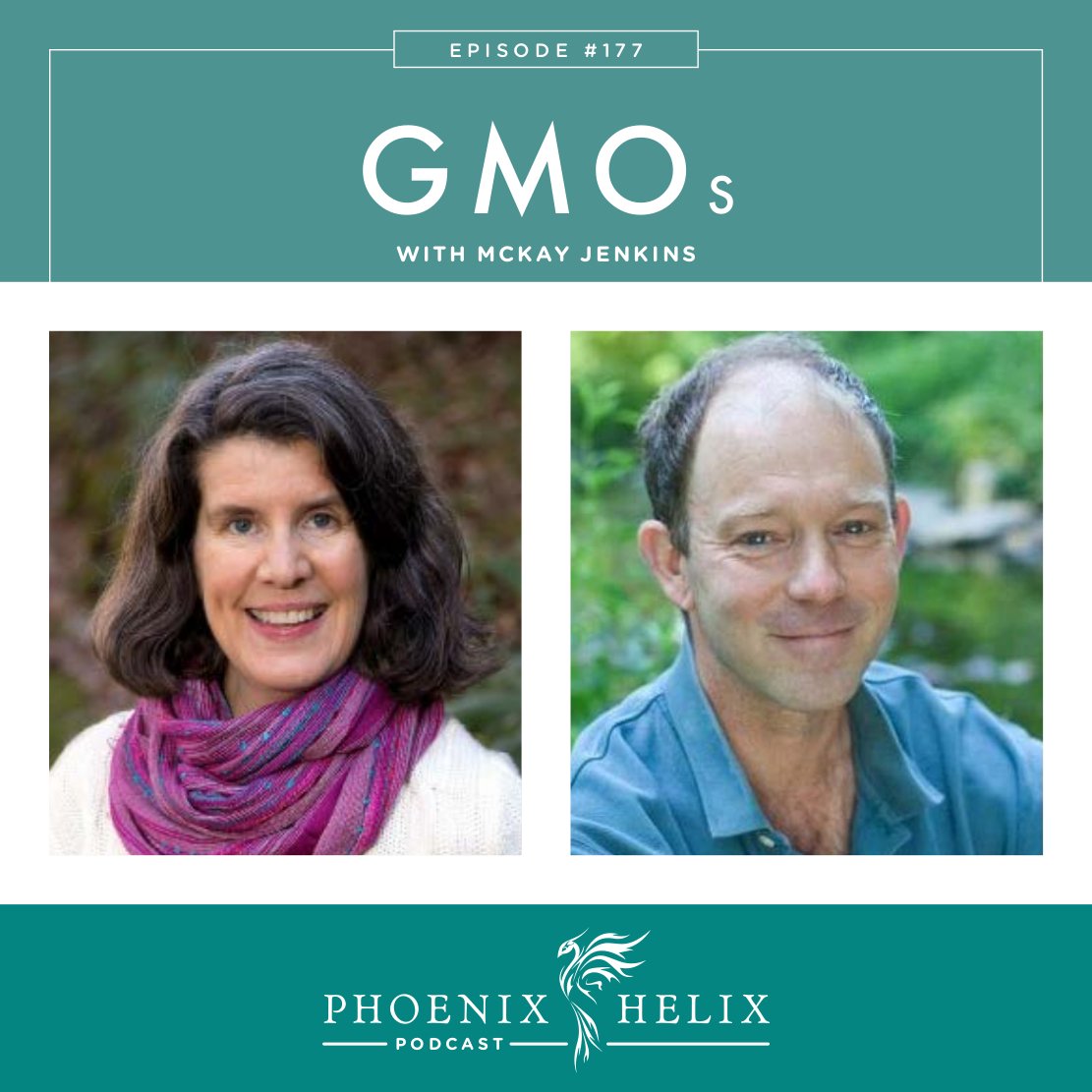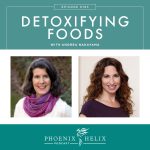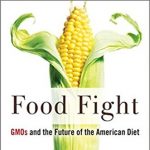GMOs – Separating the Myths from the Truths
The first genetically modified food hit the market in 1994. Now, nearly all the food included in a Standard American Diet contains genetically modified ingredients. The good news is that if you avoid processed foods and shop the perimeter of the store, you cut your GMO consumption dramatically. However, we can’t escape it altogether. The increased herbicide use becomes part of the environment in which we live. There’s cross-contamination of crops, so even farms that strive to be GMO-free often find GMO plants in their fields. And 95% of animal feed is GMO. What are the health risks associated with genetically modified foods? Is it the genetic engineering that’s the problem, or the chemicals that are sprayed on them? How can we make the healthiest choices when it comes to the food we eat? My guest is McKay Jenkins, a professor and journalist who has been writing and teaching about the environment for over 30 years. He’s the author of the book, Food Fight: GMOs and the Future of the American Diet.
Listen to the Show
- Subscribe to my podcast through your favorite podcast app: iTunes, Stitcher, Google, TuneIn, Spotify, Amazon, etc.
- You can also listen to the episode right here through the player below, and if you subscribe to my newsletter you’ll get notified of future episodes.
Podcast: Play in new window | Download
Show Notes
- Intro (0:00)
- Thank You to Our Podcast Sponsor – ShopAIP (2:28)
- ShopAIP is an online store dedicated to the Paleo Autoimmune Protocol. They have an advanced search function that lets you filter products by certification, including non-GMO certification.
- Today I’d like to highlight the Legit Bread Company. It’s owned by a woman with Hashimoto’s disease who started with a paleo line of bread mixes and recently expanded to include an AIP line. Their are six AIP products available: a bagel mix, a pancake mix, a drop cookie mix, a holiday cut-out cookie mix, a dairy-free cheese mix, and a dairy-free cheese cracker mix. There are no GMO ingredients in these mixes! You can find them all through ShopAIP.
- If you’re a first-time customer, use the code PHOENIX for 10% off your order. Purchase here.
- Meet McKay (4:05)
- McKay Jenkins is a professor and journalist who has been writing and teaching about the environment for over 30 years. He’s the author of nine books, including Food Fight: GMOs and the Future of the American Diet.
- What’s the Difference between Genetic Modification and Hybridization? (5:58)
- Human beings started experimenting with agriculture 10,000 years ago. The first step was noticing which plants did well vs. ones that didn’t, and only saving the seeds from the ones that did well. Over time, you get a hardier plant with a higher yield.
- The next step is crosspollinating one plant with another to join their positive characteristics. That is hybridization, and it’s been done for thousands of years. That’s how you develop plants with more flavor, higher yields, and resilience under a wide variety of climate conditions.
- Genetic engineering is a modern phenomenon which rose out of the science of genetics. Now, scientists can identify the genes that carry certain characteristics, and manipulate the genome accordingly. GMO supporters say it’s simply speeding up evolution and is a much faster method than hybridization. GMO detractors say it’s unnatural with many negative consequences.
- Resources:
- GMO Foods Currently Approved in the US (14:19)
- 90+% of soybeans, corn, sugar beets, and canola are GMO, and most processed foods contain them (including gluten-free processed foods).
- Ironically, wheat is a big crop that’s not genetically modified.
- 95% of animals used for meat and dairy eat GMO feed.
- Most fruits and vegetables you find in grocery stores are actually non-GMO. Some exceptions are the rainbow papaya, pink pineapple, the arctic apple, some alfalfa sprouts, some varieties of potatoes, and a few varieties of summer squash.
- GMO salmon just hit the market in May 2021 and is currently being sold through restaurants, not grocery stores.
- Resource: FDA list of GMO foods.
- The Connection Between Genetic Engineering and the Industrial Food System
- Genetic engineering is expensive, which is why the technology focuses on the biggest crops used in animal feed and processed foods. That’s where the profit is.
- You’ll often hear GMO companies say that we need GMOs to feed a starving world. That isn’t how GMOs are currently being used. Instead, GMOs are used to feed Americans fast food.
- Even GMO fruits and vegetables are created for fast food needs as well (apples that don’t brown, potatoes that make better French fries, etc).
- While it is possible to use GMO technology to increase nutrition, it’s more often used to increase profit.
- The Ethics of Genetically Modified Animals (28:41)
- Labs are controlled environments where GMO scientists show predictable results. But nature is unpredictable. What happens when it’s let out of the lab? That’s one of the greatest concerns with the GMO salmon. If it escapes the farm and breeds with wild fish, what happens to the wild fish? And the food chain? And the ocean environment overall?
- Another ethical question is the idea of meat created from cloned animal cells rather than living animals. This is a goal that scientists are working toward. If they succeed, will vegetarians eat that meat? Is that a better choice than the industrialized meat system we currently have?
- Thank You To Our Podcast Sponsor – Araza Beauty (32:52)
- Araza Beauty is the world’s first Paleo certified makeup brand, and they are 100% Non-GMO.
- Our skin absorbs what we put on it, so it’s wise to read product labels, just as we read the labels on food. Sadly, makeup often contains some of the most toxic chemicals. Araza Beauty uses ingredients that actually nourish your skin.
- Today, I’d like to highlight their bestselling, All In One Coconut Cream Foundation. It’s the ultimate skin protector by offering 25 SPF from non-nano zinc oxide. It also blocks artificial blue-light and protects against pollution. Lastly, it includes a post-biotic that balances your skin’s natural microbiome. It comes in 24 different skin tones, and they have a guide to help you find the right tone for you. They also sell sample sizes.
- This is just one of their products. They also sell eye shadow, lip color, cheek color, and more. Be sure to check out their whole product line.
- To learn more, visit ArazaBeauty.com/phoenixhelix, and use the code HELIX for 15% off your first order.
- Are GMOs Safe? Is That the Right Question? (34:44)
- In a controlled lab environment, GMOs do appear to be safe, meaning they cause no negative health effects.
- However, GMOs are not grown and distributed to people in labs. Most GMO crops are specifically designed to withstand high herbicide use. Glyphosate is the most common and is sold under the commercial name Roundup. The same companies that make GMO seeds make the herbicides sprayed on them. For this reason, you cannot eat most GMO foods without also consuming herbicide residue.
- GMOs were also created to support the industrial food system, including fast food and processed food. These foods are root causes for the increase in obesity, diabetes, and chronic illness.
- Who Regulates GMOs? (41:30)
- Ideally, a company would create a product, and then be reviewed by a government agency for safety before it’s released to the public. This isn’t how it’s done in the United States.
- GMO companies are very powerful. They influence government decisions financially through lobbying and campaign contributions. GMO executives have also filled leadership roles in the very government agencies meant to oversee their industry: the FDA, USDA, and EPA. It’s not surprising that there is little to no regulation of GMO crops, nor research funded to look at safety. Instead, farms that grow GMO crops receive government subsidies, and the level of approved chemical use has increased since the advent of GMOs.
- Europe does a better job with regulation. They use the precautionary principle – products need to be heavily tested for safety before they are approved. For that reason, they have stricter regulations concerning GMO foods.
- In the United States, it’s the opposite. Products are assumed safe until proven otherwise. This applies to most consumer products, not just GMOs. They are released into the market without much review. If you get sick due to a product or herbicide on the market, the burden of proof is on you, and it’s very difficult to prove a direct connection.
- Potential Positive Uses of GMO Foods (47:24)
- Golden Rice – This is frequently mentioned by the GMO companies in their public relations campaigns. Golden Rice was intended to cure vitamin A deficiency in the developing world. They wanted to replace white rice with one that was genetically modified to contain beta-carotene. However, it was a failure for a few reasons. GMO activists staged protests. Scientists also underestimated the cultural significance of foods. People who have eaten long-grain white rice for generations weren’t interested in eating short-grain rice that was also a different color. And lastly, Golden Rice wouldn’t have cured the deficiency anyway. It’s benefits were greatly exaggerated. Children would have had to eat 15 lbs. daily to get enough vitamin A. For these reasons, golden rice isn’t planted anywhere in the world right now.
- In spite of the failure of Golden Rice, McKay is supportive of research in this area. It’s the opposite of what the profit-driven companies are trying to do. Instead of using GMOs to make money at the expense of public health, some well-meaning scientists are trying to solve global nutrition problems, and that’s admirable.
- McKay’s favorite example of a positive GMO crop is the Rainbow papaya. In Hawaii, papayas are primarily grown by small, local farmers. Papaya trees were infected by the ringspot virus, nearly wiping out the industry. Dennis Gonsalves, a Hawaiian scientist, developed a GMO papaya that resisted the ringspot virus. It restored the farmers’ livelihoods.
- Shopping Tips if You Want to Avoid GMOs (55:35)
- In the United States, a labeling law is supposed to go into effect in 2022 where GMO foods will be labeled “bioengineered”, but it doesn’t apply to every business or every product, so there will be loopholes.
- Two positive labels you can look for are Non-GMO Project Verified and Certified Organic. Organic rules prohibit the use of GMOs.
- Paleo processed foods are often naturally GMO-free, because most GMO ingredients aren’t paleo. The exception would be paleo meat products (unless they are organic or have a non-gmo label, the animal probably received GMO feed).
- Other processed foods, including gluten-free processed foods, are almost guaranteed to contain GMO ingredients unless labeled otherwise.
- Restaurants and fast food also likely contain GMO ingredients. It’s a rare restaurant that commits to being 100% GMO-free.
- Happily, most fresh fruits and vegetables are non-GMO. Some exceptions are the rainbow papaya, pink pineapple, the arctic apple, some alfalfa sprouts, some varieties of potatoes, and a few varieties of summer squash. If you choose organic among this list, you’ll know it’s non-GMO.
- Regarding the rainbow papaya, papayas are considered a Clean 15 fruit (they carry very low pesticide residue even when not organic, and that applies to the rainbow papaya as well. So, that’s one GMO fruit you may consider eating.)
- The GMO salmon is currently being marketed to restaurants because most grocery stores are refusing to sell it.
- In summary, prioritize home cooking, buy from small local farmers, choose organic, and eat fresh foods more often than packaged foods.
- Outro (59:29)
- McKay Jenkins is the author of nine books, including Food Fight: GMOs and the Future of the American Diet. You can learn more about his work through his website.
- Special Note: Many listeners have told me they’d like to leave a positive review in iTunes but don’t know how to do it. I finished today’s podcast with a step-by-step tutorial, and I’ve also included a written tutorial below. If you take a minute to do this, I would be very grateful!
- Eileen (your podcast host) is the author of multiple books, written to help people thrive with autoimmune disease. Learn more on the Books Page.
- If you like this podcast, follow or subscribe through your favorite podcast app. You can also subscribe to Eileen’s biweekly newsletter.
- Check out the entire archive of podcast episodes.
You May Also Be Interested In
Spreading the Word
If you like the podcast, please leave a positive review in iTunes. It would mean the world to me, and also helps others find the podcast. Here are some quick instructions using your iPhone:
- If you are already subscribed to my podcast: (1) Click the purple podcast icon. (2) At the bottom of the screen, click Library. (3) At the top of the screen, click Shows. (4) Click the Phoenix Helix podcast image. (5) Scroll down the page, and you’ll see Ratings and Reviews. Scroll down a little bit more and click on Write a Review. This will bring up the review screen. Tap 5 stars (if you love the podcast), and then click in the title box, and it will bring up the keyboard. Enter a title and short review. (6) Click Send in the upper right corner. (7) Thank you! Positive reviews give the podcast a higher search ranking in iTunes, helping people find it and letting them know it’s a quality podcast and worth their time to listen.
- If you haven’t subscribed to my podcast: (1) Click the purple podcast icon. (2) In the lower right corner, click the magnifying class. (3) Type Phoenix Helix in the search box. (4) Click the podcast cover in the Show list. (5) If you’d like to subscribe, click the + sign at the top of the screen. (6) To write a review, scroll down the page, and you’ll see Ratings and Reviews. Scroll down a little bit more and click on Write a Review. This will bring up the review screen. Tap 5 stars (if you love the podcast), and then click in the title box, and it will bring up the keyboard. Enter a title and short review. (7) Click Send in the upper right corner. (8) Thank you! Positive reviews give the podcast a higher search ranking in iTunes, helping people find it and letting them know it’s a quality podcast and worth their time to listen.









Since commercial animals are fed GMO food resulting in us eating GMO indirectly, does affect milk the same way? I’m assuming it does but confirmation either way is helpful.
If you consume dairy from GMO animals, you are getting some GMO indirectly., similar to meat.